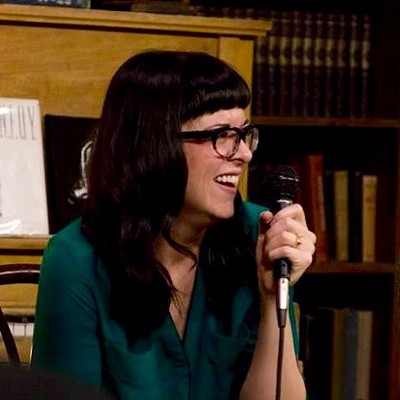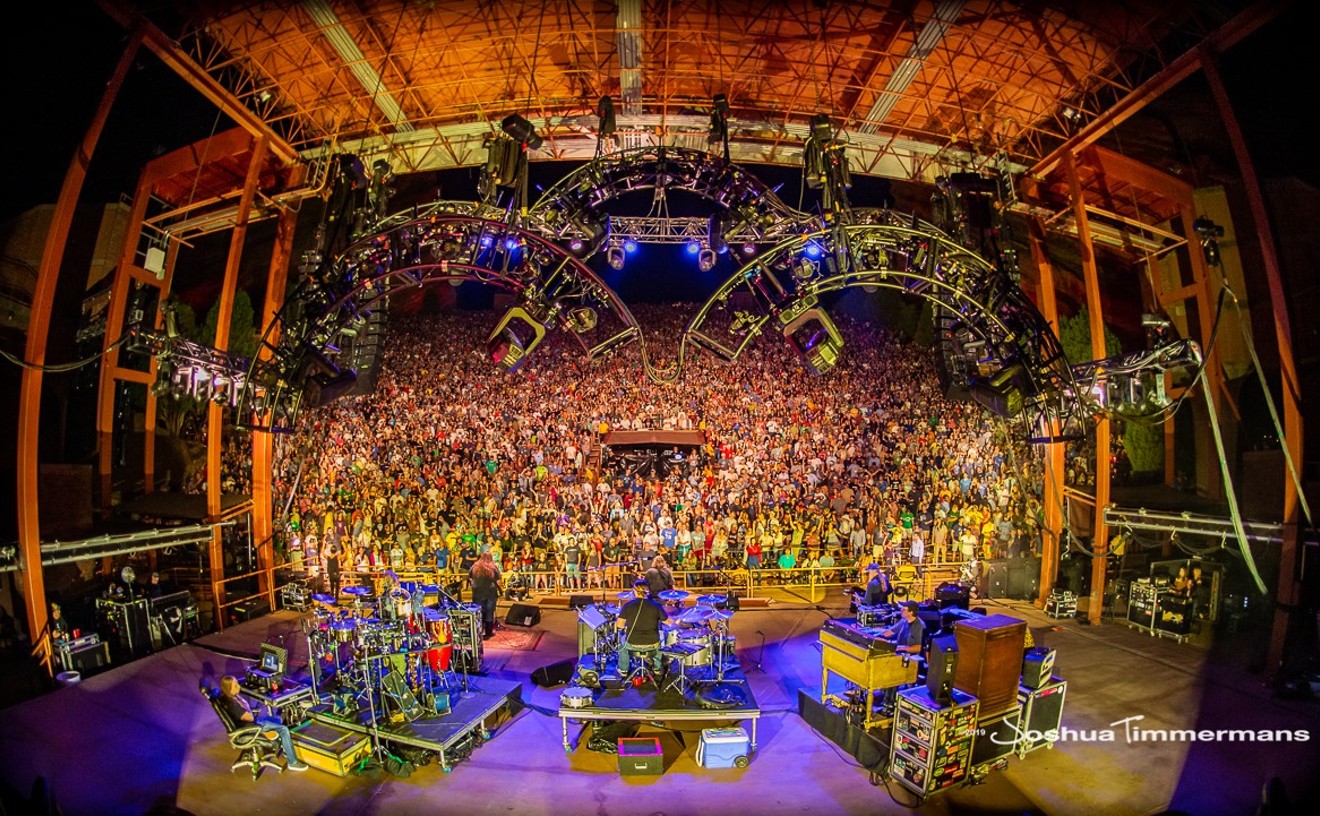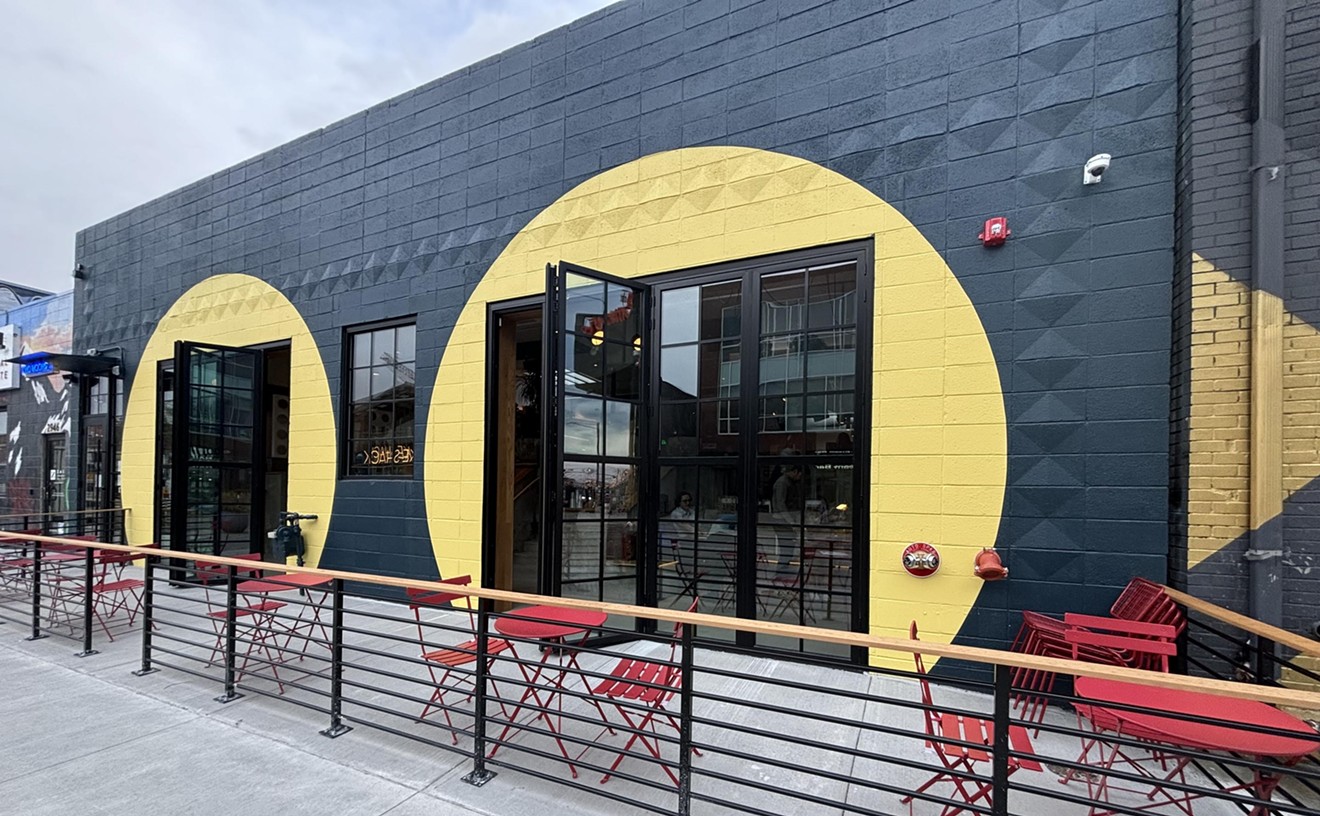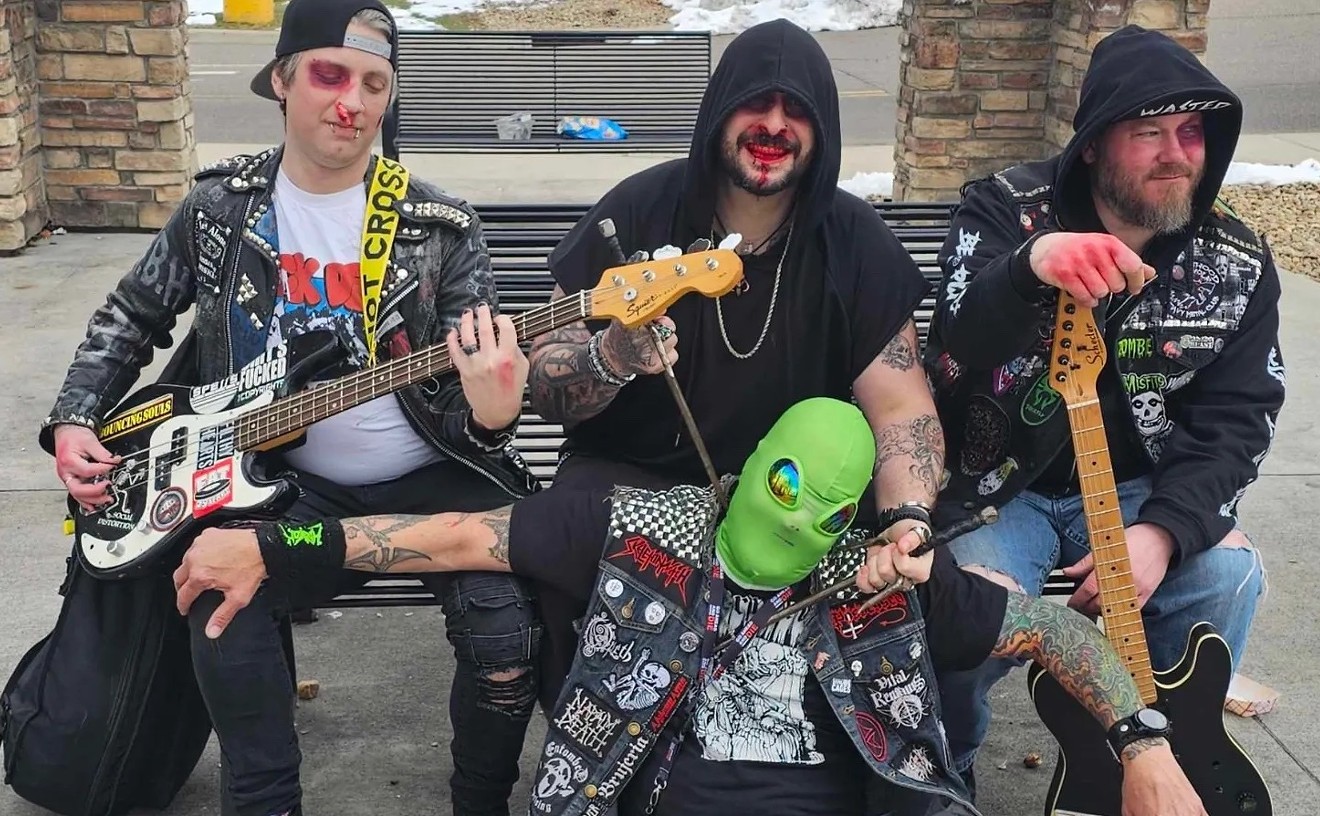DIY venues can exist anywhere — in old churches or empty storefronts or art galleries or residential homes or, in the case of Rhinoceropolis, inside of a warehouse. What makes a performance space “DIY” is that it doesn’t follow any set of official rules or regulations when it comes to operation.
At Rhinoceropolis, there are never set ticket prices or even physical tickets sold for a show. Every event is donation-based; there is often a suggested price for admission, but no one is turned away because of a lack of funds. And unlike at traditional venues, there are no set load-in times for bands. There are also no riders, no sound checks and no guest lists. There is no elevated stage or backstage area; performers and audiences coexist. Rhinoceropolis is all ages, all the time, so no matter how old you are, you can see any performance that takes place there. The venue hosts hundreds of shows a year, making it one of the premier places in Denver for people under age 21 to experience live art. DIY also means that there are no employees. At its core, Rhinoceropolis is still a home that invites strangers inside. Although it takes human power to operate the venue — shows are staffed by tenants and friends who volunteer to work the door or run sound — no one is paid to work there. Bands and performers are compensated through the donations collected at the door; the venue itself doesn’t make a profit. Likewise, residents of Rhino pay their own rent.
There are also no booking agents or managers at Rhinoceropolis. The people who live at the space determine the events that it hosts. Throughout the years, dozens of artists and musicians have resided at the warehouse. Among other things, they serve as a way for touring artists to get a foot in the door: If you know someone at Rhino, your band can probably book a show there. Because of this informal system, the space has hosted a wide range of music genres and art forms. Some years, the lineups have been more focused on electronic music; other years, rock bands have filled the calendar.
Another manifestation of its people-to-people connections is Rhinoceropolis’s strong presence within the national network of DIY venues. Long before they played larger, more “legitimate” concert venues, acts like Dan Deacon, Future Islands, No Age, Matt & Kim, HEALTH and Iceage found a place and an audience there. A performance space like Rhinoceropolis is a jumping-off point for many acts as they grow, providing an organic way to connect with fans and other people in the music and art worlds.
In terms of performance, DIY can mean lot of things. At Rhinoceropolis, it means that virtually anything goes. Although it’s most often used as a venue for live music, Rhino has also hosted art exhibits and installations, theatrical performances, multi-disciplinary arts festivals, movie screenings and everything in between. The space is divided into two main areas — one for living and one for performing. But that line is constantly blurred: Music and art performances have taken place in the bathroom and the kitchen, bedrooms have become art installations, and the building itself has been transformed into a haunted house. Drum kits have been set on fire, sod has been rolled out and performed on top of, fireworks have been set off inside, and car parts, glitter and food have been hurled at audiences. Anything can happen at a Rhino show.
While the scene inside has changed frequently over the past decade, that evolution cannot compare to the complete transformation of the area around the venue. Rhino’s neighbor across Brighton Boulevard used to be a dirt lot full of shrubs and litter. The lot has recently been cleaned up and is now a hub for food trucks hoping to lure neighbors from the brand-new, high-end Block 32 at RiNo apartment complex down the street. Nearby industrial warehouses, empty in 2005, have been revamped as a place called Industry — a collection of restaurants and co-working offices where the air is often filled with creative buzzwords.
The Filling Station — the blue-collar neighborhood bar down the street from Rhino — is now next door to a $38 million Great Divide Brewing project. The area has been without a grocery store of any kind for the past few decades, but in 2013 it became home to the Source, an upscale collective of artisan food vendors and other retailers. “The Source moved in and I was naively excited about it,” says former Rhinoceropolis resident Trevor Yawner, “until I realized, holy fuck, I can’t afford this place. It’s like Donald Trump vegetables bought by people driving BMWs and Mercedeses.”
But while craft breweries, artisanal shopping experiences and next-generation office parks are recent additions to the River North area, Rhinoceropolis has never been totally alone. There’s the Plinth Gallery across the street, which opened in 2006 and is one of many art spaces and artist studios that have called RiNo home over the years. Rhino also has a neighboring venue in Glob, another DIY warehouse space, at 3551 Brighton Boulevard. Glob opened shortly after Rhino in 2005, hosting a handful of shows each year and acting as a home for fellow artists in an apartment unit above the show space. The two venues are connected by a back porch of sorts, where their garages open up to a shared loading dock.
There’s also an actual house at 3547 Brighton Boulevard, which sits next to the warehouses and has been called Hamsterdam and Club Scum in recent times. It hosts performances from time to time and serves as a refuge for touring bands playing at Rhino.Drum kits have been set on fire, sod has been rolled out and performed on top of, fireworks have been set off inside, and car parts, glitter and food have been hurled at audiences. Anything can happen at a Rhino show.
tweet this
DIY venues are, by nature, transient. A place like Rhinoceropolis staying continuously in operation in the same location for a decade is unheard of. And it has no plans to disappear any time soon. But what was once a thoroughfare for delivery trucks along a desolate stretch of road has now become expensive real estate in a fast-growing city. When Rhinoceropolis opened its doors to a dusty street with no sidewalks a decade ago, it was often hard to get people to visit this part of town for a show. Now the little DIY venue once happily hidden among junkyards, car-repair shops, old factories and a handful of galleries and studio spaces suddenly finds itself at the heart of feverish development. How long it can survive as city expansion creeps quickly along Brighton Boulevard is unknown.“Everyone sort of creates their own moment — it’s like the nine lives of Rhino,” says Stephan Herrera, a former Rhinoceropolis resident and artist who has performed as Docile Rottweiler and Phonebooks. “It’s interesting to see how this neighborhood is changing; it feels definitely like it’s just a matter of time. It’s sad that alternative spaces are becoming extinct — at least it feels like it in Denver. But I still have hope that the ideals in the end will be triumphant, even if their form takes a radical new shape.”
The impact that Rhinoceropolis has had on Denver’s artistic community could fill volumes. In honor of the venue’s tenth birthday, we talked to dozens of residents, artists and fans who’ve helped to further its DIY ideals.











